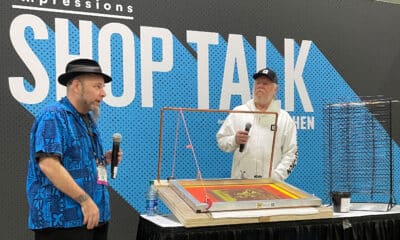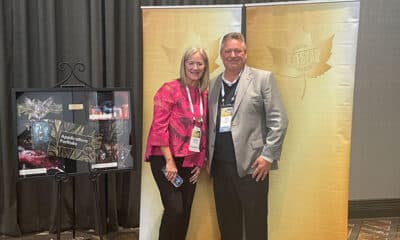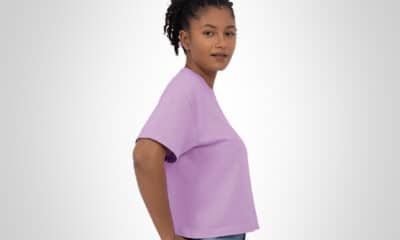(PRESS RELEASE) According to a report from Future Market Insights, the textile recycling market size is projected to be worth US$ 4.8 billion in 2023. The market is likely to reach US$ 6.6 billion by 2033. The market is further expected to surge at a CAGR of 3.2% during the forecast period 2023 to 2033.
Key Market Trends and Highlights
Growing environmental concerns over textile waste generation and rising social awareness about textile recycling are projected to drive the growth of the market.
Several government agencies and private companies consider textile recycling as the solution to solve problems associated with textile waste management.
The National Council of the American Textile and Garment Foundation establishes that waste generated by discarded textiles accounts for a significant share of trash in the United States.
The United States government has set a goal to raise consumer awareness about textile recycling. For instance, the government has propelled an initiative to attain zero waste by the year 2037 under the leadership of the (CTR) Council for Textile Recycling.
Advertisement
Textile Recycling Market Key Drivers
Innovative recycling technologies are being advanced to process several textile materials more efficiently. Developments in mechanical, chemical, and enzymatic processes allow for better fiber separation, dye removal, and higher-quality recycled textiles.
The idea of a circular economy is gaining attention in the textile sector. Brands and manufacturers are looking to incorporate circular economy principles into their business models, driving demand for recycled yarn.
The emphasis is on textile-to-textile recycling, where textiles are turned into fibers that can be used to create new fabrics. AI-based automation and grading technologies are also being used to advance the efficiency and accuracy of grading processes.
The rise of startups that have focused on textile recycling reflects the growing interest and investment in the sector. These startups often bring new ideas and cutting-edge technology to solve long-term challenges.
Industry groups are launching campaigns to educate customers and businesses about the benefits of textile recycling, influence behavior, and promote a culture of sustainability.
Advertisement
Challenges in the Textile Recycling Market
Textiles comprise fibers, blends, dyes, and finished products, making the recycling process complicated. Diverse materials require specific handling methods. The dearth of standard identification or labeling systems for textiles may stymie growth in the coming decade.
Textile recycling faces challenges associated with the quality of the material collected. Contamination with non-recyclable items, such as buttons, zippers, and other accessories, can reduce the quality and value of recycled materials.
The expansion of advanced recycling technologies capable of efficiently processing a wide range of textile materials is still evolving. Several existing techniques have limitations in terms of scalability and efficiency, which can hinder the overall recycling process.
Comparative View of Adjacent Markets
Future Market Insights has compared two other markets, namely textile staples market and airlaid textile market below. This showcases that textile recycling industry is set to dominate out of these three markets over the forecast period 2023 to 2033.
Advertisement
Rising consumer demand for eco-friendly products and awareness around sustainability are likely to create new opportunities in the market. Common opportunities are expected to present themselves to vendors operating in the target market, allowing horizontal expansion.
Sustainable Practices among Manufacturers Driving United States Market
The United States is expected to reach US$ 1.2 billion by 2033, growing at a CAGR of 3.1%. The textile recycling market in the United States is mounting due to increasing awareness of the environmental influence of textile waste and the importance of recycling. Customers, businesses, and government agencies progressively recognize the need to move textiles out of landfills.
The United States is the world’s leading consumer of clothing and textiles. This high level of consumption contributes to the generation of an important amount of textile waste, making textile recycling a significant part of waste reduction efforts.
The market is seeing rapid advancements in recycling technology. These include enhanced sorting methods, chemical recycling processes, and the expansion of new recycled textile materials.
Several nonprofit organizations have actively worked to promote textile recycling and raise awareness of the benefits of moving textiles out of landfills. These organizations often work with businesses and communities to facilitate recycling efforts.
Public awareness campaigns are becoming highly popular. They are used to educate consumers about the environmental impact of textile waste and encourage them to recycle or donate unused clothing.
The United Kingdom spearheads the Circular Fashion in Europe
Textile recycling trends in the United Kingdom are taking a turn for the better. A 2.9% CAGR is forecast for the country from 2023 to 2033. By the end of this forecast period, the United Kingdom textile recycling market is likely to total US$ 247 million.
The global fashion industry contributes to 4% of global carbon emissions. Textile production causes GHGs equivalent to the emissions in France, Germany, and the United Kingdom. The government, therefore, has been promoting measures to reduce this footprint.
The United Kingdom government has announced its Extended Producer Responsibility scheme. This would ensure that the fashion industry contributes to recycling costs. This is supported by measures encouraging better design and labeling.
The United Kingdom textile industry has already made progress in this, led by the Sustainable Clothing Action Plan, a voluntary agreement coordinated by WRAP. The government has additionally introduced its Textile 2030 initiative. As part of this initiative, the country aims to reduce the environmental footprint of the textiles sector through science-based targets.
Competitive Landscape
The global market is a niche industry and is in a growing phase. The market is uneven and is branded by the occurrence of several large and small-scale players.
The key strategies chosen by large companies include several growth strategies such as technology development, expansion as well and mergers and acquisitions to surge market share, reach and revenue.
In April 2023, Circ collaborated with Zara to launch its womenswear collection made of recycled lyocell and polyester separated from mixed textile waste.
Lenzing Group announced in 2023 the introduction of the LENZINGTM ECOVERO equipped with the REFIBRATM technology. This will help Lenzing’s ongoing stride towards the transition to a circular economy in textile and fashion with its innovative, future-proof solutions.
In May 2023, Birla Cellulose collaborated with TextileGenesisTM to provide traceability and transparency solutions in the fibers and garments industry. Birla Cellulose is actively collaborating with brands and supply chain partners, innovators, and orchestrators such as Canopy, Fashion for Good, and Circular Fashion Partnership to scale its circular business model.
These insights are based on a report on textile recycling market by Future Market Insights

 Columns1 month ago
Columns1 month ago
 Editor's Note4 weeks ago
Editor's Note4 weeks ago
 Press Releases1 month ago
Press Releases1 month ago
 Marshall Atkinson4 weeks ago
Marshall Atkinson4 weeks ago
 Press Releases4 weeks ago
Press Releases4 weeks ago
 Case Studies1 month ago
Case Studies1 month ago
 News & Trends2 months ago
News & Trends2 months ago
 Headlines1 month ago
Headlines1 month ago


















